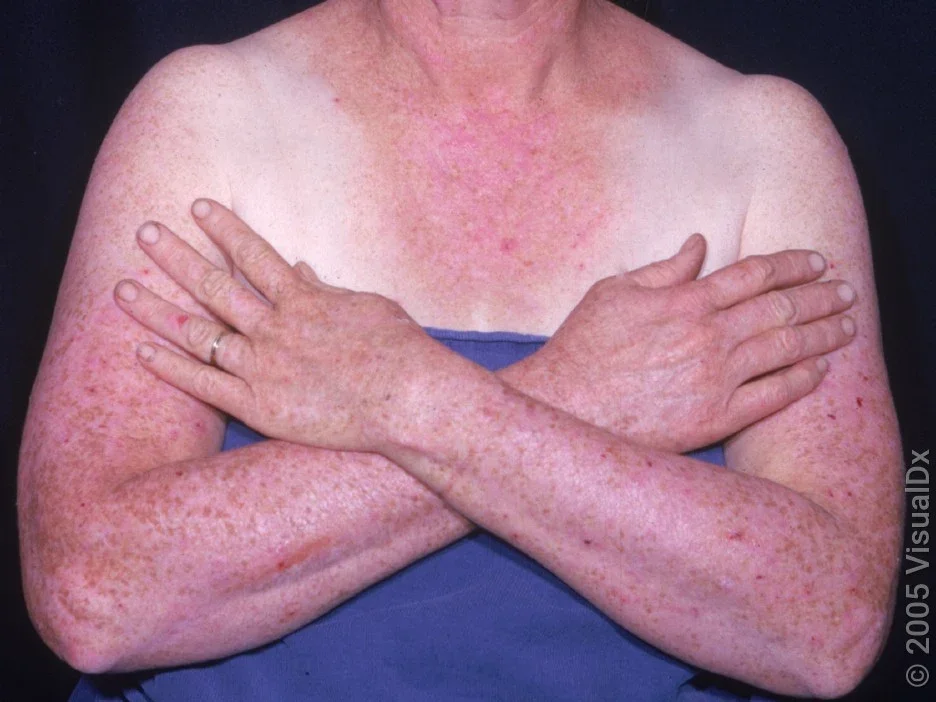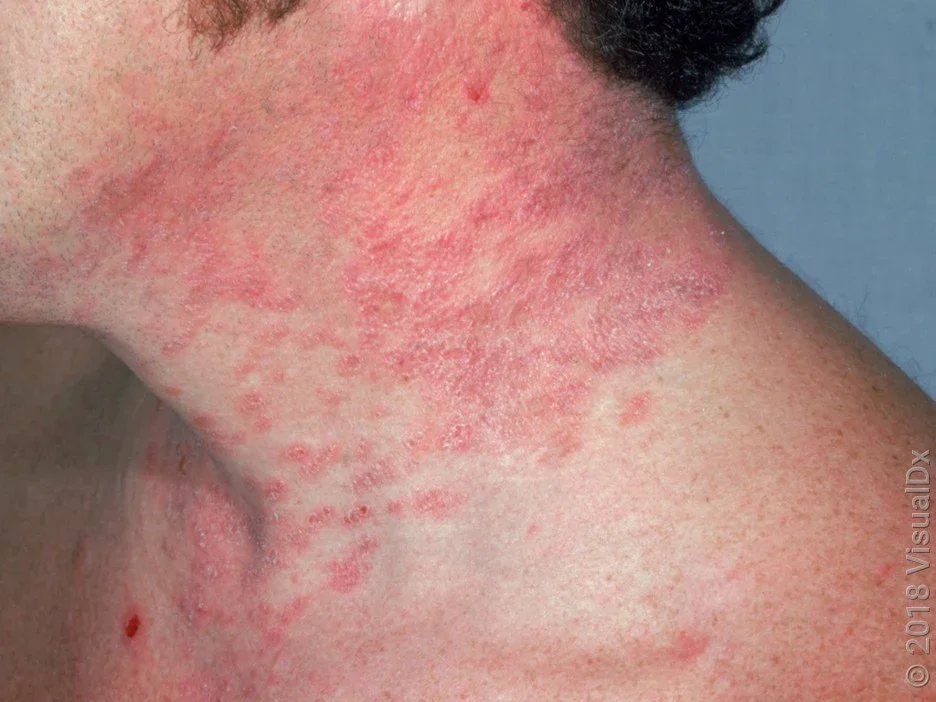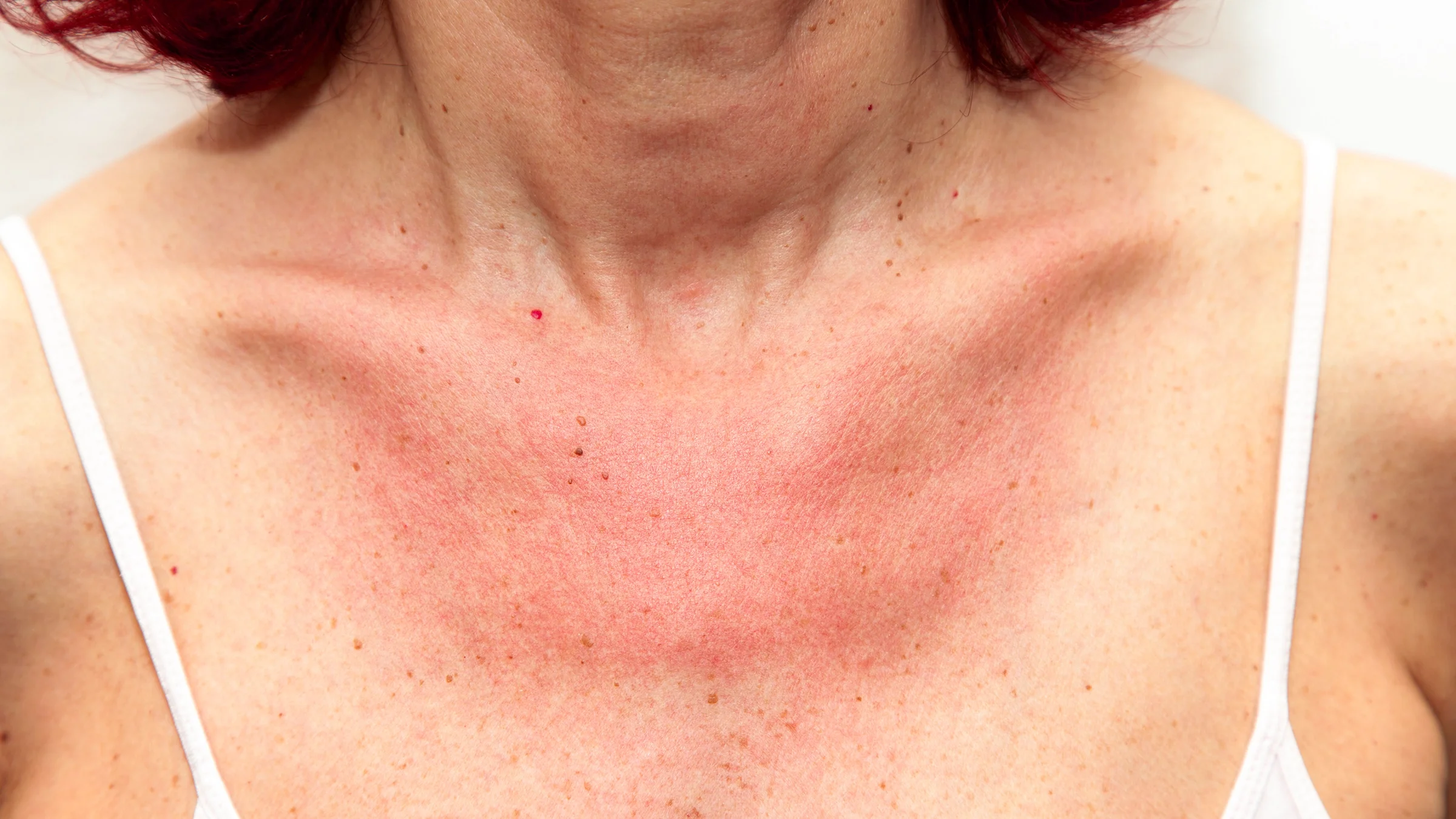Key takeaways:
A sun allergy causes a rash that can be itchy and painful after exposure to the sun.
Sunlight can also trigger a rash in people who have photosensitivity from medical conditions or medications.
People with sun allergies and photosensitivity can protect their skin by putting on sunscreen, hats, and protective clothing when they’re outdoors.
Some people can’t wait to get out into the sunshine and soak up vitamin D, especially after a long winter. But for people with a sun allergy, a sunny day isn’t always a cause for celebration — in some cases, it can be debilitating. Painful, itchy rashes can start within minutes of sun exposure and can last for days.
Here’s what you should know about sun allergies and how to manage them so you can still enjoy your time outdoors.
What is a sun allergy?
A sun allergy is not a true allergy to the sun but rather some type of immune reaction that’s triggered by ultraviolet light. It usually presents as an itchy or painful rash that develops after being in the sun. There are a few different types of sun allergy. Here’s a closer look at some of the more common ones.
Search and compare options
Polymorphous light eruption
Polymorphous light eruption (PMLE) is the most common type of sun allergy, affecting up to 20% of people. It can happen in any skin tone and at any age, but is most common in fairer skin and women between 20 and 40 years of age. It usually starts hours to a couple of days after sun exposure and is most common during spring months (March to June).
PMLE usually affects both sides of the body and is common on the:
Arms
Neck
Upper chest
Lower legs
Solar urticaria
Solar urticaria is an uncommon type of sun allergy. It causes someone to develop hives a few minutes after they’re exposed to the sun or artificial ultraviolet (UV) light. People of any age can get solar urticaria, but the average age to develop it is around 35 years old. Solar urticaria may appear on skin that’s intermittently exposed to the sun (like the back), but doesn’t usually appear on skin chronically exposed to the sun (like the face).
Actinic prurigo
Actinic prurigo is a very itchy rash that develops hours to days after sun exposure. It can affect all skin tones, but it’s most common in people of Latin American and American Indian descent. It can also affect people of all ages, but 30% of the time it develops in children, especially before puberty.
Actinic prurigo is common on the following areas of the body:
Face (like the cheeks, nose, forehead, and lips)
Earlobes
Neck and chest
Conjunctiva of the eye
Medications that increase sun sensitivity: From antibiotics to diabetes medications, learn which medications can make you more likely to burn in the sun.
Sunburn vs. sun poisoning: Learn how to tell the difference between these two reactions that happen from too much sun exposure (with photos).
The benefits of daily sunscreen: From preventing skin cancer to minimizing dark spots, read about the many benefits of wearing sunscreen every day.
What’s the difference between sun allergy and sun sensitivity?
A sun allergy is one type of photodermatosis (a type of rash that develops from sun exposure). It’s different from sun sensitivity (photosensitivity). People with photosensitivity — or sensitivity to the sun — also develop red, painful, and sometimes itchy rashes when they come in contact with sunlight or UV light, but the causes are different.
Some people are born with medical conditions that make them sensitive to UV light. These conditions are rare but can lead to painful rashes that can scar. People can also develop photosensitivity from medical conditions like:
Dermatomyositis
Porphyria
Psoriasis
Read more like this
Explore these related articles, suggested for readers like you.
Medications can also trigger photosensitivity. Common medications that make people sensitive to light include:
St. John’s wort
Certain plants and fruits can also trigger photosensitivity if the extracts or juices are in direct contact with your skin.
Symptoms of a sun allergy
People with a sun allergy have a sun intolerance that causes an itchy or painful rash. Depending on the type of allergy, you may experience any of the following on sun-exposed skin:
Crops of tiny bumps that are pink or red (in fairer skin) or skin colored (in darker skin)
Fluid-filled blisters that can crust over
Dry, discolored patches
Pink, red, or skin-colored smooth bumps (welts)
People with solar urticaria who have a large area of skin involved may also notice some of the following symptoms:
Swelling of the eyes and mouth
Nausea
Feeling faint
Trouble breathing
Anaphylaxis, a life-threatening allergic reaction (this is very rare)
What does a sun allergy rash look like?
Here are some photos of polymorphous light eruption, one of the most common types of sun allergy rash.


How do you diagnose sun allergies?
Most people can tell they have a sun allergy because they develop a rash within a few minutes of being in sunlight. But sometimes the rash develops a few days later, so the connection isn’t as clear.
A dermatologist or other healthcare professional can usually confirm a sun allergy based on your symptoms and what your rash looks like. Sometimes additional testing, like phototesting (a type of allergy test) or skin biopsy are needed to confirm the diagnosis.
Phototesting
In phototesting, a healthcare professional will shine a light source that gives off UVA and UVB light on a small patch of your skin. If you have a sun allergy, you’ll develop a rash on that part of your skin.
The test can also tell if you’re sensitive only to a specific wavelength of light. It can also help figure out how long you can stay in sunlight before developing a rash. This information can be very helpful as you plan outings.
Skin biopsy
If it’s not clear whether your rash is from sunlight exposure, a healthcare professional may recommend a skin biopsy. This lets a pathologist look at a piece of your skin under a microscope to confirm whether your rash is a sun allergy rash or another medical condition.
How do you treat sun allergies?
The best treatment for sun allergies is to avoid sun exposure (more on that below). Depending on what type of sun allergy you have, here are some treatments that may help:
Corticosteroids (either pills or creams)
Omalizumab (a biologic medication)
Phototherapy (controlled exposure to ultraviolet light to help your skin build tolerance)
Preventing sun allergies
Sunlight avoidance is the best way to prevent sun allergy. But, of course, that’s impossible. Instead, focus on avoiding too much sun exposure. You can follow these practices:
Spend less time outdoors on sunny days.
Wear broad-spectrum sunscreen that protects against UVA and UVB light.
Wear a wide-brim hat to protect your face, ears, and neck.
Cover your skin with clothing as much as possible when outside.
Add UV filters or shades to windows.
Frequently asked questions
Yes. Ice can help relieve symptoms from different types of sun allergy rash by reducing itching and lowering inflammation. It’s best not to put ice directly on your skin because of the risk of frostbite. Wrap it in a thin towel or use a cold compress.
No. Sun allergies don’t lead to skin cancer. However, over time, unprotected sun exposure can damage your skin and lead to skin cancer. Using sunscreen (or other forms of sun protection) can lower your risk of developing sun allergies and skin cancer.
Yes, it’s possible to develop a sun allergy later in life. If it feels like you are suddenly allergic to the sun — no matter what age you are — talk with a healthcare professional to get the right diagnosis.
Yes. Ice can help relieve symptoms from different types of sun allergy rash by reducing itching and lowering inflammation. It’s best not to put ice directly on your skin because of the risk of frostbite. Wrap it in a thin towel or use a cold compress.
No. Sun allergies don’t lead to skin cancer. However, over time, unprotected sun exposure can damage your skin and lead to skin cancer. Using sunscreen (or other forms of sun protection) can lower your risk of developing sun allergies and skin cancer.
Yes, it’s possible to develop a sun allergy later in life. If it feels like you are suddenly allergic to the sun — no matter what age you are — talk with a healthcare professional to get the right diagnosis.
The bottom line
Sun allergies cause red, itchy, and sometimes painful rashes.There are different types of sun allergy, but polymorphous light eruption is the most common type. If you think you might have a sun allergy, always wear sunscreen and spend less time in sunlight. You should also talk with a healthcare professional. They may be able to test you for a sun allergy and recommend prescription treatment options.

Why trust our experts?



Images used with permission from VisualDx (www.visualdx.com).
References
American Osteopathic College of Dermatology. (n.d.). Biopsy.
Coulson, I. (2021). Phytophotodermatitis. DermNet.
Gramp, P. (2022). Polymorphic light eruption. DermNet.
Komarow, H. D., et al. (2015). Solar urticaria. The Journal of Allergy and Clinical Immunology: In Practice.
Lehmann, P., et al. (2011). Photodermatoses: Diagnosis and treatment. Deutsches Ärzteblatt International.
MedlinePlus. (2023). Conjunctiva.
Ngan, V. (2006). Actinic prurigo. DermNet.
Ngan, V. (2006). Solar urticaria. DermNet.
Oakley, A. M., et al. (2023). Polymorphic light eruption. StatPearls.
Yashar, S. S., et al. (2003). Classification and evaluation of photodermatoses. Dermatologic Therapy.


















